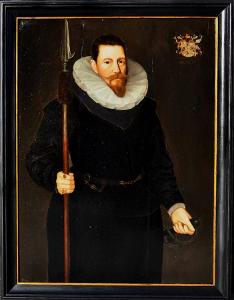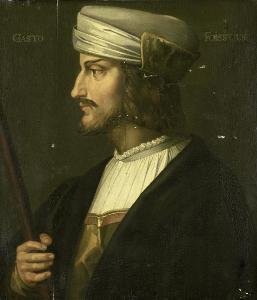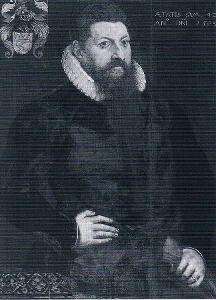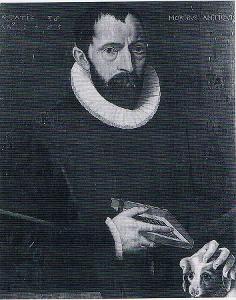Anonymous painter, probably 17th century
Gaston de Foix
Oil on panel : 53 X 46 cm
Unsigned
Identified with his Latinised name “Gasto Foisseius”
Amsterdam, Rijksmuseum


About Gaston de Foix
Gaston de Foix, Duc de Nemours (1489 – 1512), also known as The Thunderbolt of Italy, was a French military commander noted mostly for his brilliant and impetuous six-month campaign from 1511 to 1512 during the War of the League of Cambrai.
The War of the League of Cambrai, sometimes known as the War of the Holy League was a major conflict in Italy fought from 1508 to 1516. It was a crazy war in which the allies constantly changed sides.
Pope Julius II, intending to restrain Venetian influence in Northern Italy, had created the League of Cambrai, as an anti-Venetian alliance with Louis XII of France. But by 1510 Julius allied himself with Venice against France in the Holy League, which drove the French from Italy in 1512. Then the Venetians formed an alliance with the new French king, Francis I, against the pope. The war finally ended with treaties which would essentially return the map of Italy to the status quo of 1508.
In 1511 Gaston arrived in Italy as a new commander at the age of 21. His presence and energy shifted the conflict into much higher levels of activity. First he beat the Papal-Spanish army that besieged the French in Bologna. After this he defeated the Venetians at Brescia. Finally heading for Ravenna he met again the Papal-Spanish forces. He beat them in a huge battle, but was himself killed while pursuing the fleeing enemy. After his death the French were chased from Italy.
About our painting
It is remarkable that at some stage a typically Dutch portrait from 1606 has been identified as a French warlord, active in Italy, who died almost a century earlier.
I have not been able to make a link between Gaston de Foix and the Dutch Republic but for some strange reason the Rijksmuseum in Amsterdam possesses also a 17th century “portrait” of him.
Why should you buy this painting?
Because you love the archaic style of these portraits of immobile, sturdy, frozen noblemen.




